Training for a Marathon as a Beginner Runner
Embarking on the journey of training for a marathon as a complete beginner to running can be a daunting yet rewarding experience. The marathon, a 26.2-mile (42.195 km) race, is a significant physical and mental challenge that requires dedication, discipline, and proper preparation. This article will explore the essential steps for beginners to kickstart their marathon training journey and gradually build the strength and endurance needed for the ultimate running feat.
From Beginner to Advanced, be sure to visit our Marathon Running Plans!
Getting Started:
Start Early: Lay the Foundation for Success
The earlier you begin training for a marathon, the more time your body has to adapt to the increasing demands of distance running. A well-structured training plan typically spans 16 to 20 weeks, allowing for a gradual buildup of mileage and endurance. Starting early also provides flexibility in accommodating unforeseen challenges, ensuring a smoother and less stressful training period.
Know Your Limits: Build a Solid Foundation
Before diving into marathon-specific training, assess your fitness level and running experience. Having a solid foundation of regular running is crucial before committing to the demands of marathon preparation. Aim to comfortably run at least 15-20 miles per week for several months to prepare your muscles, joints, and cardiovascular system for the rigors of long-distance running. Consult with a physician before beginning any training program.
Try Shorter Races First: Gain Experience and Confidence
Participating in shorter races, such as 5Ks or 10Ks, can provide valuable experience and build your confidence as a runner. These races serve as excellent training opportunities, allowing you to practice pacing, test your race-day routine, and understand how your body responds to various distances. Completing shorter races can serve as milestones in training for a marathon.
Choosing Your First Marathon
Choosing your first marathon race is a pivotal decision that can significantly impact your overall experience and success in completing the 26.2-mile journey. Start by considering factors such as the race location, time of year, and climate to align with your preferences and training conditions. Research the course profile, as some marathons are known for their flat terrain, while others may have challenging elevation changes. Look into the race atmosphere; some events emphasize community support and spectator involvement, fostering a motivational environment for beginners. Consider the race size, opting for one that suits your comfort level—smaller races may offer a more intimate experience, while larger ones provide a vibrant and energetic atmosphere. Additionally, pay attention to the registration process, entry fees, and potential fundraising requirements, ensuring they align with your budget and commitment. Ultimately, choosing your first marathon involves carefully evaluating personal preferences and practical considerations to make the marathon journey memorable and enjoyable.
Building Blocks of Training for a Marathon
Create a well-structured training plan that includes a mix of easy runs, long runs, speed workouts, and rest days. Weekly mileage should gradually increase, with a few step-back weeks to allow for recovery. Many training plans span 16 to 20 weeks, catering to runners of various fitness levels. As you prepare to outline training for a marathon, ensure your plan has the following components:
Base Mileage
Building a solid base mileage is a fundamental aspect of training for a marathon, serving as the foundation upon which the rest of the training plan is constructed. Initially, focus on establishing a consistent running routine with moderate distances to condition your body gradually. Start with shorter, more manageable runs and gradually increase your weekly mileage at a rate that allows for adaptation without risking injury.
A typical base-building phase spans several weeks, during which runners aim to achieve a comfortable and sustainable weekly mileage. This phase strengthens muscles, tendons, and ligaments while enhancing cardiovascular endurance. For example, three to five weekly runs are sufficient for most beginner runners. Keep these runs easy, and do not worry about your speed. An easy running pace is a pace that feels relaxed and where you can easily hold a conversation with someone else.
The general rule of thumb is to never increase your weekly mileage by more than 10 percent from week to week.
By prioritizing base mileage, you prepare your body for the more intense aspects of marathon training and lay the groundwork for successful long-distance running, fostering resilience and reducing the risk of overuse injuries as you progress through the subsequent phases of your marathon training plan.
Long Runs
Long runs are a cornerstone of marathon training, helping your body adapt to the demands of sustained effort. Gradually increase the distance of your long runs, peaking a few weeks before the race.
Long runs should be done once every 7 to 10 days, and every 3 to 4 weeks, you should have what is considered a recovery week. For example, you may run 12 miles on one Saturday, 14 miles the next, then 16 miles, and then 12 miles again before moving up in mileage to more than 16 miles the following week.
Most long runs should be done 60 to 90 seconds slower per mile than your 5K race pace. As you tackle your long runs, start slow, keeping a conversational pace early and progressing the pace quicker in the later miles. Focus on hydrating and fueling, listen to your body, and don’t overdo it. While it is essential to challenge yourself during long runs, avoid pushing to the point of exhaustion. The primary goal is to build endurance, not burn out or risk injury.
As your training for a marathon progresses, consider incorporating a few race-specific long runs to simulate marathon conditions. Practice your target pace on terrain similar to what you will experience during the marathon. Take weather conditions into account as well. Adjust your pace and hydration accordingly if it is particularly hot or humid. Extreme weather can significantly impact performance.
Speed Work and Tempo Runs
Speed work and tempo runs as a beginner are optional work to add when training for a marathon. If you are new to running and training for a marathon, then faster-paced running sessions are unnecessary for success. However, if you have been running for a while at shorter race distances and are now looking to set a certain time goal in the marathon, you will need speed work and tempo runs to help you achieve your goals. These sessions enhance cardiovascular fitness, improve running efficiency, and help you maintain a steady pace during the marathon. Examples include fartleks, tempo runs, and track intervals.
Strength and Cross Training
Supplement your running routine with cross-training activities like cycling, swimming, or elliptical workouts. Strength training is equally essential to prevent injuries and enhance performance. Focus on exercises that target your core, legs, and stabilizing muscles.
Rest and Recovery
Rest days are crucial components of training for a marathon, providing essential recovery time for the body to repair, adapt, and strengthen. These days involve a break from structured running workouts, allowing muscles, joints, and the central nervous system to recover from the physical stress imposed during training. Rest days serve several purposes in marathon training:
Muscle Recovery: Intense training stresses muscles, leading to microscopic damage. Rest days allow these muscles to repair and rebuild, reducing the risk of overuse injuries.
Prevention of Overtraining: Marathon training demands consistent effort, but overtraining can be counterproductive. Rest days prevent burnout, fatigue, and mental exhaustion, ensuring you approach each workout with energy and enthusiasm.
Injury Prevention: Running puts repetitive strain on joints and connective tissues. Rest days allow these structures to recover, reducing the likelihood of chronic injuries such as stress fractures, tendonitis, or muscle strains.
Mental Refreshment: Marathon training can be mentally demanding. Rest days offer a mental break, allowing you to recharge and approach the next workout with renewed focus and motivation.
Immune System Support: Intense training can temporarily suppress the immune system. Rest days contribute to overall health by allowing the immune system to function optimally, reducing the risk of illness.
Rest days don’t necessarily mean complete inactivity. Light activities such as walking, cycling, or yoga are beneficial for promoting blood flow, flexibility, and active recovery without putting additional stress on your running muscles. It is essential to listen to your body and adjust the frequency and intensity of rest days based on how you feel, especially during peak training weeks.
A well-balanced training plan that includes rest days is key to long-term success in marathon training. It ensures you balance pushing your limits and allowing your body the necessary time to recover and adapt.
Tapering When Training For A Marathon
In the final weeks leading up to the marathon, gradually reduce your mileage to allow your body to recover and store energy. Tapering is a crucial phase that ensures you arrive at the starting line feeling rested and ready for the challenge.
Hydrating and Fueling On The Run
Hydrating
Hydrating your body correctly is essential for marathon training success. Nearly all marathons will have aid stations along the course, but you need to practice consuming fluids during your training to prepare your body and mind for what you will experience on race day.
During your long runs, try the following approaches to practicing hydration:
- Carry enough water to get you through the long run (or know where drinking fountains are to refill). To accomplish this goal, use a hydration belt, handheld water bottle, or hydration pack. The larger the carrying device, the easier it is to carry other running essentials like energy gels, your phone, and extra gear for inclement weather.
- Complete your long runs on a short loop course so that you can stash your hydration needs along the way or use your vehicle as a makeshift aid station.
- Plan your route where you know there are plenty of drinking fountains, but be sure to check in advance that they are still on during the colder winter months.
- Drop your hydration needs along your route the night before or the morning of your long run. Just be sure to label them and put them in place so that (1) you’ll remember where they are and (2) that someone is not likely to disturb them.
The amount of water you need can vary based on temperature, humidity, and individual differences. As a general guideline, aim to consume about 16-24 ounces (473-710 ml) of water per hour during your long runs.
Fueling
Like hydration, fueling during long runs is crucial for maintaining energy levels, sustaining performance, and preventing the depletion of glycogen stores. Here are some guidelines for effective fueling during long runs in marathon training:
Carbohydrates are Key: Consume easily digestible carbohydrates for quick energy. Common options include energy gels, chews, sports drinks, or even real food like bananas or energy bars.
Timing Matters: To prevent early glycogen depletion, begin fueling early in your run, typically after the first 45-60 minutes. Space out your fueling strategy to maintain a steady energy supply.
Practice During Training: Experiment with different fueling products during training to find what works best for you. Pay attention to taste, digestion, and the impact on your energy levels.
Follow Package Instructions: If you are using commercial energy products, follow the instructions on the packaging regarding recommended serving sizes and frequency. Each product may have different concentrations of carbohydrates and electrolytes.
Calculate Carbohydrate Intake: Aim for 30-60 grams of carbohydrates per hour during long runs, adjusting based on your individual needs and the intensity of your workout.
Whole Foods as Alternatives: If you prefer, you can opt for whole foods like dates, raisins, or pretzels as natural sources of carbohydrates. Just be mindful of their portability and ease of consumption while running.
Avoid Overloading: While fueling is essential, avoid overloading calories, as this can lead to digestive discomfort. Practice moderation and find a balance that works for your body.
Train Your Stomach: Train your stomach to tolerate the specific products you plan to use on race day. This helps prevent potential stomach issues during the marathon.
Post-Run Nutrition: After your long run, prioritize post-run nutrition to replenish glycogen stores and aid recovery. Include a combination of carbohydrates and protein in your post-run meal or snack.
Remember that individual fueling needs can vary, so it’s crucial to experiment during training to determine the best strategy for you. Developing a personalized fueling plan is crucial to marathon training success, ensuring you have the energy to tackle the long distances and perform at your best on race day.
Race Week and Race Day
As race day approaches, relax and be confident in your ability. You have put in the work, and now it is time to enjoy the experience. Consider reviewing these Do’s and Don’ts of Race Week.
Training for a marathon is a transformative and challenging endeavor, but anyone can conquer the distance with the right preparation and mindset. By establishing a solid foundation, setting clear goals, and following a well-structured training plan, you will be well on your way to crossing the marathon finish line with a sense of accomplishment and pride. Embrace the journey, stay focused, and enjoy the process of becoming a marathoner.
If you need assistance building a marathon training plan, consider our digital training plans on Final Surge, or if you are looking for a coach to follow you through your training with advice and feedback, look into Monthly Online Coaching with Andrew Taylor.














